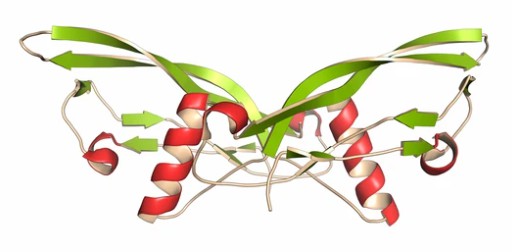BMPs (Bone Morphogenetic Proteins)
Related Symbol Search List
Immunology Background
BMPs (Bone Morphogenetic Proteins)
BMPs (Bone Morphogenetic Proteins) are an important class of multifunctional cytokines belonging to the transforming growth factor beta (TGF-β) superfamily. There are at least 20 structurally and functionally related BMPs, most of which play a role in embryogenesis and morphogenesis of various tissues and organs. Biologically active BMPs are usually homodimers containing a characteristic cysteine structure. The heterodimers BMP-2/BMP-7 and BMP-4/BMP-7 are also known to exist and function in vivo. They are more potent inducers of bone formation than their respective homodimers. In addition, heterodimers, but not homodimers, are ventral mesoderm inducers. Heterodimer activity can be mediated by different or additional receptor subtypes.

Bone morphogenetic proteins (BMPs) are multifunctional growth factors of the transforming growth factor β (TGFβ) superfamily that are involved in embryogenesis, bone formation, hematopoiesis, and neurogenesis. They regulate cell differentiation, proliferation, and migration by modulating gene expression and cell-cell interactions. Recent studies have identified the potential of BMPs in development, disease treatment, and tissue engineering. Researchers are striving to find new subtypes of BMPs, resolve their signaling pathways, and develop new technological approaches to utilize them, including gene editing techniques, vector delivery systems, and direct application of BMPs. By delving into the mechanisms of BMPs and utilizing their roles to advance clinical applications, we are expected to make even greater breakthroughs in the fields of skeletal system disease treatment and tissue regeneration.
Functions of BMPs (Bone Morphogenetic Proteins)
- Bone and Cartilage Formation
BMPs are known for their ability to induce the differentiation of mesenchymal stem cells into osteoblasts (bone-forming cells). They promote bone formation and mineralization, ensuring the proper development and maintenance of the skeletal system. BMPs also play a role in the formation and remodeling of cartilage.
- Embryonic Development
BMPs are essential during embryonic development, influencing the patterning and differentiation of various tissues and organs. They regulate cell fate decisions, contribute to the formation of specific structures, and help establish body axes. BMP signaling is crucial for the development of the central nervous system, heart, limbs, and other organs.
- Wound Healing and Tissue Repair
BMPs play a crucial role in wound healing and tissue repair processes. They promote the migration and proliferation of cells involved in tissue regeneration, such as fibroblasts and endothelial cells. BMPs also stimulate the production of extracellular matrix components, aiding in tissue remodeling and regeneration.
- Dental Development
BMPs are involved in tooth development and tooth regeneration. They contribute to the formation and differentiation of dental tissues, including enamel, dentin, and cementum. BMPs play a role in dental morphogenesis, tooth eruption, and the maintenance of tooth integrity.
- Neurogenesis and Neural Differentiation
BMPs participate in the regulation of neurogenesis and neural differentiation processes. They influence the proliferation and differentiation of neural stem cells, promoting the generation of neurons and glial cells. BMPs also play a role in axon guidance and synaptic plasticity.
- Angiogenesis
BMPs contribute to the formation of new blood vessels (angiogenesis). They promote endothelial cell proliferation, migration, and tube formation, facilitating the growth of blood vessels during development and tissue repair. BMPs also regulate the expression of pro-angiogenic factors, influencing vascularization processes.
- Metabolic Regulation
BMPs are involved in the regulation of metabolic processes, including glucose and lipid metabolism. They influence insulin sensitivity, adipocyte differentiation, and energy homeostasis. BMP signaling can impact metabolism-related disorders, such as obesity and diabetes.
- Cancer Development and Progression
Dysregulation of BMP signaling has been implicated in cancer development and progression. BMPs can have both tumor-suppressive and tumor-promoting effects, depending on the specific context and cellular environment. They influence cell proliferation, apoptosis, angiogenesis, and metastasis in different types of cancer.
Overall, BMPs are multifunctional proteins that play critical roles in various physiological and pathological processes. Their functions span across different organ systems and contribute to the development, maintenance, and repair of tissues and organs throughout the body.
Reference:
- Katagiri T, Watabe T. Bone Morphogenetic Proteins. [J] Cold Spring Harb Perspect Biol. 2016;8(6)
- Toofan, Parto, Irvine, et al. The role of the bone morphogenetic proteins in leukaemic stem cell persistence. [J]. Biochemical Society Transactions, 2014.
- Bhatia, Bonnet, Wu, Murdoch, Wrana, & Gallacher, et al., Bone morphogenetic proteins regulate the developmental program of human hematopoietic stem cells. [J]. The Journal of Experimental Medicine, 1999.

